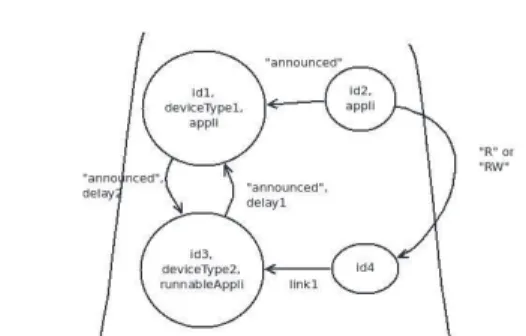Graph-based formalism for Machine-to-Machine self-managed communications
Texte intégral
Figure




Documents relatifs
We define the notion of logically decorated graph rewriting systems (LDRS) where the left-hand sides of rules are graphs attributed by formulas in a dynamic logic, called C2PDL[5],
Architectural recon- figuration management consisting in transforming the sys- tem architecture evolving situation is formally ruled using graph rewriting techniques.. 1 p-neighbours
The execution space of processes is modelled as a set of transformation rules applied on their corresponding graph encodings.. Structural congruence is checked using efficient
Let G be a simple graph, R be a set of rules (having only relation nodes in their conclusion) representing implicit knowledge, and C be a set of positive and negative constraints..
The formal models that allow the generation of a graph grammar for dynamic architecture description and the automatic definition of transformation rules for achieving
We denote the transitive saturation of the graph of classes of the homomorphical saturation of graph of rewriting process of the query q and a set of existential rules R by GP = (VP
While triple graph grammars (TGGS) are an elegant way to descriptively define model trans- formations by defining triple rules that specify the synchronous creation of source and
While triple graph grammars (TGGS) are an elegant way to descriptively define model trans- formations by defining triple rules that specify the synchronous creation of source and